A dog is a man’s best friend”– well said, but look out if you are not the friend of a true survival dog. When you are in danger, a well-trained survival dog may be your only hope of survival.
Not just any old dog will do. Does your dog need to be fearless and scary or helpful and gentle regardless of the situation, or a good balance of both?
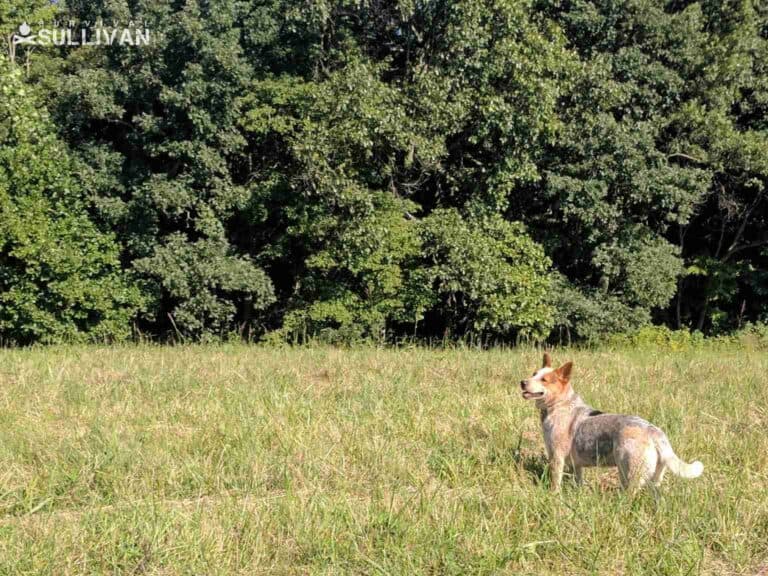
Do you need a dog that can assist with mobility or specific disability needs on a daily basis or in a crisis situation?
Table of Contents
What to Look for in a Survival Dog
Important characteristics to consider for a survival dog:
- Intelligence
- Temperament and energy level
- Training and socialization needs
- Health issues
- Strength and endurance
- Work ethic
How dogs can assist with mobility or disability needs in an owner either every day or in a crisis:
- Carrying needed items
- Retrieving emergency medications when owner cannot
- Balance stabilization and fall prevention
- Calming effect for anxious owner
- Guiding and navigating in and out of the home
- Opening doors or cabinets that are out of reach
- Helping an owner to stand after a fall
- can help by hunting for us
- can help by herding for us
- Attracting or seeking out human assistance when needed
- Repositioning an unconscious, seizing, or injured owner as needed
- Protecting an unconscious or young child from harm, such as being stepped on in a crowded area
- can help by finding aftermath victims of floods, tornadoes, fire, etc
- Alerting a blind or deaf owner to street signs/lights, debris, doorbell or knocking, an intruder, fire, smoke, or natural gas odor.
- Pulling a wagon, cart, or even a wheelchair when needed
- can help by using their inborn sense of direction to find home
- can help by locating food and water
- can help by being early detector of intruders
- can help fend of predators from your livestock
- can help by guarding children from wild animals
- can help as a pack animal
- can help by pulling carts or sleds
- can help by sending messages to neighbors
- detect illness or tainted foods and water
- can detect ill intentions or dangerous people
- can detect natural disasters
- know when a storm is coming and can warn us to take cover
In a survival situation, your dog must be able to perform multiple valuable tasks.
Common survival uses for a dog include:
- Locate animals for you to eat (hunting)
- Defend you in the event of an attack (personal protection)
- Keep you warm in cold weather (especially if you are injured)
- Warn you of pending danger (early alert)
- Chase off small predators/protect livestock (guard dog/herding)
- Offer a significant morale boost or serve as a trusted guide (companionship or service)
Your immediate reaction may be to think big: big dog, strong enough to carry its own BOB, better personal protection, and better able to withstand bad weather.
These are all valid points, but there is another thing you need to consider – a big dog eats a lot, so its BOB is going to be bulky and heavy.
Not to mention that the disaster situation could last a long time, so you will have to have stockpiled a huge amount of food, and learn to actually make dog food once your stockpile runs out.
Smaller dogs take less fuel to keep them going. However, they may not be as intimidating in the event of personal attack and may be more sensitive to cold.
Both large and small dogs can be trained in several survival techniques such as tracking and trailing. Of course, some breeds have been specifically bred to excel in a specific set of skills, such as hunting, sporting, agility, guarding, or herding.
But it’s also not unusual for the skill set of the dog to reflect the skill and consistency of the trainer. Sometimes you can teach an old dog new tricks!
No soldier goes into battle untrained – no dog will be useful to you when disaster strikes if you haven’t trained it well. You are going to have to put time and effort into training to get the reliable results you need.
All breeds of dog must be thoroughly trained in basic obedience commands. One-on-one teaching and intense individual attention will pay huge dividends and the results will likely exceed your expectations.
Consider These Best Dogs for Survival
Here’s a list of dog breeds you should consider – review this information so you can make an educated decision on what type of dog best suits your needs.
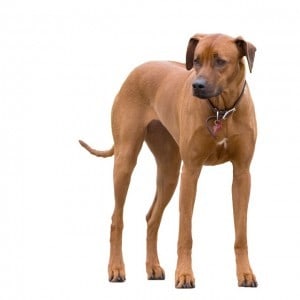
The Rhodesian Ridgeback
The Rhodesian Ridgeback, sometimes called the African Lion Dog or Hound, may be a good one to consider if you are bugging out.
Medium sized, but not huge, the Ridgeback is a fearless yet loving dog that will do an excellent job of protecting you and your family. They are loyal, intelligent and very athletic, are able to effortlessly travel long distances in a day.
| Pros | Cons |
| Medium size, not huge | Can be aggressive if not socialized properly |
| Fearless yet loving | Excessively harsh training is not effective |
| Excellent for protection, hunting, and early warning | High prey drive can result in running off; can be stubborn |
| Loyal and intelligent | Coat not idea for extreme weather |
| Very athletic; good endurance and speed; able to travel long distances in a day | Low to medium protection factor |
The Ridgeback, just like any dog, needs sound training – especially when it comes to socializing. Aggressive behavior in these dogs usually happens when the dog isn’t socialized properly. Considering that they are quite capable of warding off lions, I wouldn’t want to be on the wrong side of a Ridgeback.
They tend to hold aloof from strangers; however, this is not aggressive behavior. They will, more often than not, simply ignore strangers rather than challenge them.
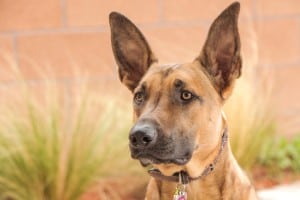
The Belgian Malinois
This uncommon breed comes highly recommended for survival by those who own one. Historically bred for herding livestock, they are commonly used today by law enforcement, and by families for personal protection.
| Pros | Cons |
| Athletic, fast, and confident in the face of obstacles | Not ideal for inexperienced owners; early training and socialization is critical |
| Intelligent and easily trainable; can be conditioned to gunfire | Moderate prey drive; can wander |
| Imposing when threatened, especially when ears are cropped | Exercise needs vary but some dogs can require vigorous exercise daily |
| Few health issues | Shed constantly and heavily shed twice annually |
| Excellent fighter; good for personal protection |
May
be prone to hip or elbow dysplasia and PRA, a degenerative eye
disease
|
| Good with children; not overly aggressive with strangers | May nip or herd young children if not properly trained |
| Medium size; Light enough to carry short distances if needed | Can be aggressive toward unknown dogs or cats |
| Good weather resistant coat |
|
The German Shepherd
The German Shepherd (GSD) is one of the world’s most popular breeds of dog. Sometimes known as the Alsatian, or Alsatian Wolf Dog, the breed originated from Germany during the 19th century, where they were primarily used for herding sheep.
| Pros | Cons |
|---|---|
| Highly intelligent & trainable; excellent early warning alert and detection dog | Prone to overheating in hot weather |
| Good all-weather coat | Moderate health issues |
| Ideal size for a wide range of tasks |
|
| Versatile, obedient and loyal |
|
| Second most powerful bite |
|
| Strong protective instincts; ideal guard dog |
|
| Athletic with strong work ethic |
|
GSDs are highly intelligent and make excellent guard dogs. Today they are heavily relied on for police patrols, criminal tracking, and search-and-rescue missions. Their sheer size and strength make them ideal for a wide range of tasks and their obedience, loyalty, and versatility is highly prized.
Thousands of GSDs have been employed in military missions such as scout duty, messenger dogs, and personal guard dogs. They can be trained to warn soldiers of enemy presence and in the detection of explosives.
They are extremely athletic, have the second most powerful bite of all dog breeds, and possess strong protective instincts.
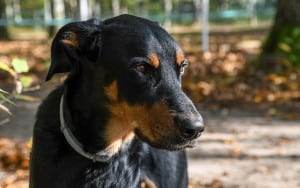
The Beauceron
The Beauceron, aka Berger de Beauce, gets its name from Southwest Paris. Historically the Beauceron has been used as a guard dog, rescue dog, for WWI trench warfare, as a wide or outer edge herding dog, and a trusted companion.
| Pros | Cons |
| Very smart, versatile herding dog; good energy; alert and ideal for early warning dog | Need experienced, firm owner; Not ideal for inexperienced or novice owners |
| Good for personal protection or guard dog; formidable and powerful | Needs regular grooming to control frequent shedding. Shedding can be heavier twice annually |
| Larger in size, up to 27.5 inches tall; Muscular and solid, yet graceful | Training and socialization are critical; do respond well to harsh training |
| Double coat, with water resistant outer layer | May be susceptible to bloat; owner should know symptoms |
| Can be trained for agility, herding, and even carting or pulling a sled |
|
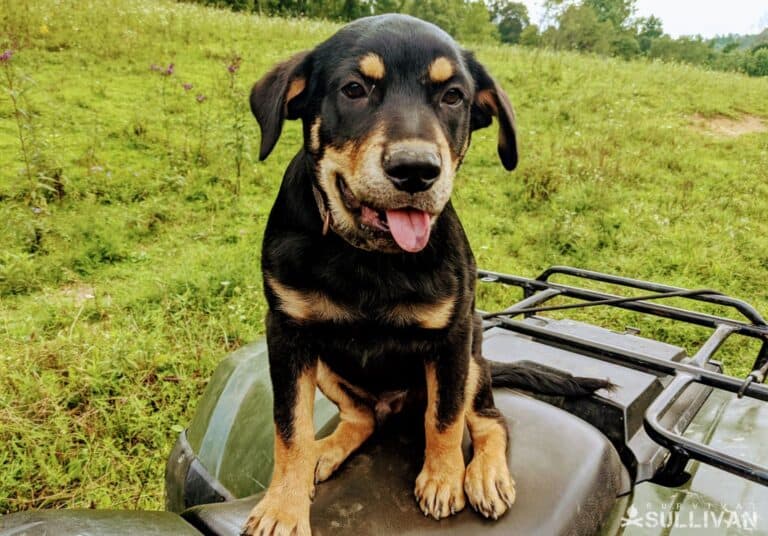
The Rottweiler
The Rottweiler is famous for its powerful bite, which is second to none. Despite this ugly reputation, the Rottweiler is surprisingly gentle and friendly in disposition, extremely loyal, devoted, and eager to work.
| Pros | Cons |
| Good natured, self-confident temperament | Can be aloof with strangers |
| Highly intelligent | Training can be tricky |
| Loyalty and devotion make this a fantastic guard dog; very intimidating | Herding instinct can make interaction with small children and other pets difficult |
| Excellent as a companion or working dog; endurance can be lower than other breeds | Needs extensive socialization |
| Strong desire to please | Proper training is crucial |
| All weather coat | Poor hunting instinct |
| Keen hearing and smell make them good for early warning alert dogs |
|
Training these dogs can be a little tricky, but your patience and persistence will pay off and the results will be well worth the effort.
Rottweilers are basically fearless, have an inherent desire to herd, and can be relied on to work stock of any kind under any weather conditions.
However, this instinct may cause difficulties in the home environment if the dog is to be near other home pets or small children – behavior of this kind isn’t going to work in a family environment.
Dangerous behavior in Rottweilers usually results from mishandling, neglect, abuse, or lack of opportunity for normal socialization. For this reason, breeders insist that the dog is given opportunity for extensive socialization and responsible, formal training.
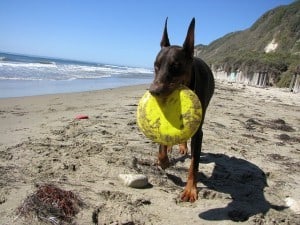
The Dobermann Pinscher
The common perception of Dobermann Pinschers is that they are aggressive, intimidating, and ferocious. Considering that the breed was developed as a personal guard dog, these traits are quite natural.
| Pros | Cons |
| Fearless in defense of its master |
|
| Loyal and good natured temperament |
|
| Easily trained to obey commands |
|
| Highly intelligent |
|
| Medium sized |
|
| Short-haired coat |
|
| Energetic |
|
The Dobermann was bred to be fearless in the defense of its master, yet with enough obedience to do so only on command. This kind of dog that only needs one word from its master and it can put down that burglar in your house.
However, over the years breeders have toned down the aggression of the Dobermann to produce a breed which is much better natured, extremely loyal and easily trained.
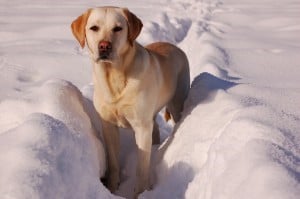
The Labrador Retriever
The Labrador (or Lab) has the boast of being the most popular breed of dog in the world.
Originally bred in Canada for the purpose of bringing in nets from the water and retrieving escaping fish, the Labrador has won international accreditation as a guide for the blind and as a companion for those with other disabilities.
| Pros | Cons |
| Versatile and able to perform a huge variety of tasks | May need firm handling for best results |
| Great companion dog; loyal and obedient | Extreme heat can cause them to get overheated more quickly |
| Excellent swimmers | May not be the best for protection due to loving nature |
| Keen sense of smell and hearing for hunting and detection purposes | Can be loud but aren’t as intimidating as other breeds |
| Playful and energetic; good family dog | Strong prey drive can result in running off |
| All weather coat |
Labs are used extensively by law enforcement agencies for detection and screening purposes.
Their keen sense of smell enables them to follow almost any scent trail. Their persistence allows them to remain on the scent until they find their object, a trait which has led to their extensive use as trackers for criminals, terrorists, thieves, and smugglers.
They are excellent swimmers and have been known to save children’s lives by dragging them from the water.
The ability to carry an object in its mouth with little damage is unique to the Labrador, however it has more than enough grunt to make a vicious attack on an unwanted intruder.
Its even temperament makes it a fantastic family pet, although it’s fun-loving nature may require firm handling to guarantee the best results.
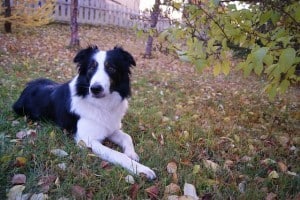
The Border Collie
The Border Collie was originally bred In Northern England as a working dog and is highly prized for its intelligence and obedience. It responds well to human commands and is famous for its herding ability, especially with sheep.
| Pros | Cons |
| Extremely energetic, playful yet demanding | Requires regular, rigorous exercise |
|
| Strong herding instinct can make them difficult as a family pet |
Although they may make good companions, the Border Collie may not a good option for your family – due to their strong herding desires, they may become jealous and even attack. Obviously,, this behavior can’t be tolerated, especially if there are children in the picture.
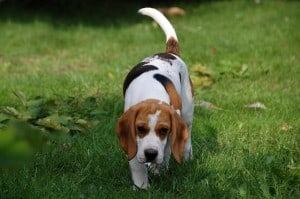
The Beagle
As a member of the hound family, the Beagle was originally used as a hunting dog. Beagles were developed for the primary purpose of hunting hare.
They made ideal companions for hunters on horseback or those on foot, which makes them an excellent choice if you are bugging out – they can hunt out rabbits, squirrels, and other small quarry.
| Pros | Cons |
| Excellent for hunting small prey |
|
| Strong sense of smell for detection purposes |
|
| Medium size |
|
| Even temperament makes them good family pets |
|
| Intelligent |
|
The Beagle is not dissimilar in appearance to the foxhound; though smaller, shorter and with longer ears. Its strong sense of smell has rendered it useful in quarantine roles, detecting prohibited foodstuffs, and agricultural imports.
Their even temperament, single-mindedness, medium size and intelligence has made them popular family pets.
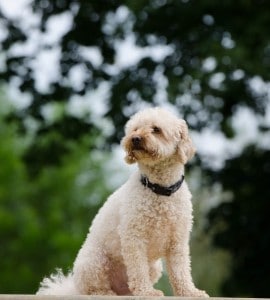
The Poodle
Yes, the Poodle. Incorrectly stereotyped as a dainty, fancy little bit of fluff that walks sedately beside well-to-do ladies, the Poodle is actually a highly intelligent and very capable dog. We are talking about the ‘larger Poodle’ here – not the little kind that has bows and ribbons in its hair.
The Poodle was traditionally a highly valuable gun dog, used in the hunting of fowl.
| Pros | Cons |
| One of the most intelligent breeds | Peak performance requires a lot of physical and mental stimulation |
| Highly trainable | Low intimidation factor |
| Instinctive hunting and marking drive |
|
| Excellent swimmer |
|
This breed’s instinctive behavior is worth noting – hunting and marking drives are more obvious in Poodles than a lot of other dog breeds. It ranks as one of the most intelligent dogs, is highly trainable, and an excellent swimmer.
While the Poodle is being more extensively used again in America as a hunter, many men still refuse use this breed because of its association with the ‘elite’ of society.
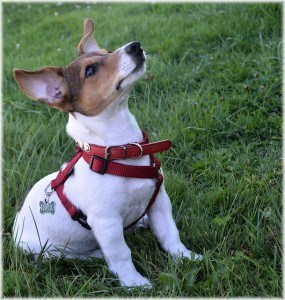
The Jack Russell Terrier
The Jack Russell Terrier (JRT) is a small, fearless, and extremely athletic dog. Originally bred to chase out ground game such as badgers, fox, and groundhogs, the JRT has the ability to locate the victim in the earth then either hold it there or flush it out.
Most JRTs seem to have endless energy and more likely than not, you’ll get tired long before your dog.
| Pros | Cons |
| Endless energy; stamina | Require a lot of physical exercise |
| Low number of health issues | Can be destructive when bored or not properly stimulated |
| One of the toughest breeds; | Improper socialization can result in aggression |
| Persistent bark and excellent hearing | Can be noisy and stubborn |
| Light enough to carry if needed | Not ideal for personal protection; low intimidation factor |

The Akita
Taking its name from Akita, a northern province in Japan, the Akita was historically used in feudal Japan for guarding nobility. Also used for hunting fowl and tracking larger game such as deer, black bear, and wild boar.
The Akita, introduced to America by Helen Keller, is a working dog breed ranging in size from 2 feet to approximately 2 feet 4 inches tall and from 70 to 130 pounds.
Proper training is critical to reliable results from the Akita. It has the potential to be a great survival dog with an experienced owner who understands how to head off negative traits.
There are as many opinions on survival dogs as there are people to give them. No one dog is the perfect ‘all-rounder,’ so you need to assess what you need and choose accordingly.
When the tide turns ugly, you want a dog you can rely on – one that is trustworthy and can help you get out of trouble as quickly as possible.

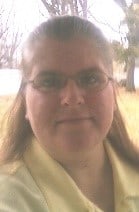
Born and raised in NE Ohio, with early memories that include grandpa teaching her to bait a hook and watching her mom, aunts, and grandmothers garden, sew, and can food, Megan is a true farm girl at heart.
For Megan, the 2003 blackout, the events of 911, and the increasing frequency of natural disasters like Hurricane Katrina, spurred a desire to be more prepared. Soon to be living off-grid, this mother of four and grandmother of ten is learning everything she can about preparedness, survival, and homesteading.

I have had and trained a lot of dogs; I am a farmer who always have a herding dog, was a dog musher with 36 huskies, have had many of the dogs on your list
I had a pair of Doberman bitches, who were wonderful, they would be my go to survival dog, except! that they can not take the cold. I bread labs, love labs, but they are too damn interested in hunting, will not stay home so that is no good. Shepherds have those goofy back legs, The Belgium dogs we had (there are two breeds), were not that tough, and I never saw a smal terrier who wasn’t always getting into trouble.
I have an Australian Cattle Dog, the instincts of a collie on a more aggressive solid chassis. But like the collie they are too damn yappie!
If it was warmer I’d go with the Doberman, maybe if global warming keeps going on…